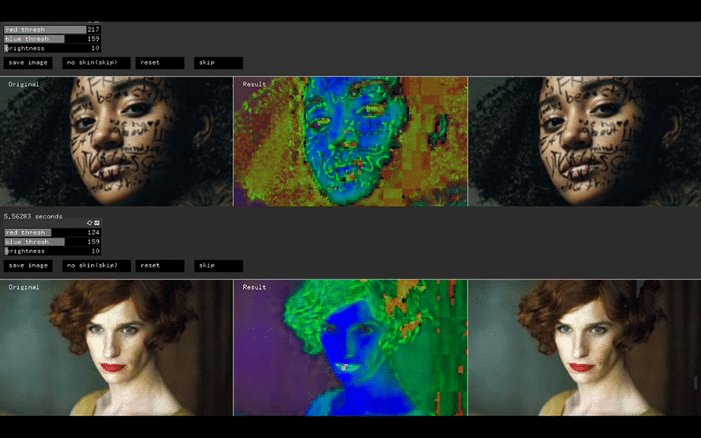








Technologies for Seductive Criticism is an interactive archive constructed in a WebGL space. Visit the WebGL interface via the link www.dazedscraper.xyz
Technologies for Seductive Criticism is a methodology for new media cultural analysis developed alongside programmer Jayson Haebich. Focusing on representations of body and identity captured in image and text, Technologies for Seductive Criticism searches for editorial bias within cultural digital platforms. The background context of images is erased using an automated process of montage that leaves the digital flesh of bodies exposed. Words are pulled from texts in a process of quantification – from most used to least, verb, adjective and chronological use. The results of this deconstruction are sorted into subjective categories that observe posture, gesture, body relationships, proximity and scale; composing a visual analysis of bodies within new media and how they are positioned through language and situation.
The conceptual underpinnings were activated in collaboration with cultural critic Jefferson Hack and Dazed Media, London. Working specifically with DazedDigital.com, three years’ worth of visual and text-based content (from 2014 to 2017) was scraped from the online platform.
Gabriel A Maher (Concept | Design | Methodology)
Jayson Haebich (Programming | Software Development)
Michele Vescio (Sound Artist | Sound Design)
Dazed Media (Initial Content)
Funded in part by Creative Industries Fund NL

Discrimination and bias exist within coding structures. Especially when the machine must analyse or classify representations of the body; racial and gender biases as well as stereotyping. Algorithms will exclude, include, label and classify based on limiting criteria. This was a concern when we began to look at a technology to extract areas of digital flesh.
‘Regarding the skin extraction: the algorithm converts the image to an HSV [stands for hue, saturation, and value] colour space and allows for different tones/colours to be extracted via thresholding, this means that the algorithm can be used as a general-purpose method for extracting different tonal qualities. Programmer Jayson Haebich, (2016)

Performances for Technologies for Seductive Criticism compose a text/image/soundscape and deliver research (digital archives) through the tools of the DJ. Text fragments from the digital archive are fabricated into an absurd script. This script is activated through hybrid readings; spoken word, concrete poetry. The performative outcome combines mechanisms of multi-media performance lecture and technology. The technology acts as a catalyst to understand the development of body-techniques within the digital archive (and digital media platforms).
Performance | Intersections: Mapping the Queer Body – in ‘Eleutheria: A Queer European Film & Arts Festival’ – collaboration w/ Isabel Mager + curated by Carlota Jerez.
This performance appropriates the tools of the DJ from a queer, feminist perspective to create a critical landscape of bodies in which questions around identity, sexism, racialization, exploitation, race, or class are at play. The piece combines Maher’s design work, which examines the ‘mediated bodies’ produced in Western digital platforms, with Mager’s work, which focuses on the invisibility of workers’ bodies and exploitative patterns in the production of digital devices, thus subverting and queering systems of image production, consumption, and representation.
Eleutheria as part of EUNIC (European Union National Institutes for Culture), Representing the Netherlands, hosted by Frank Schipper. Performance and roundtable at Kulturhuset, Stockholm.